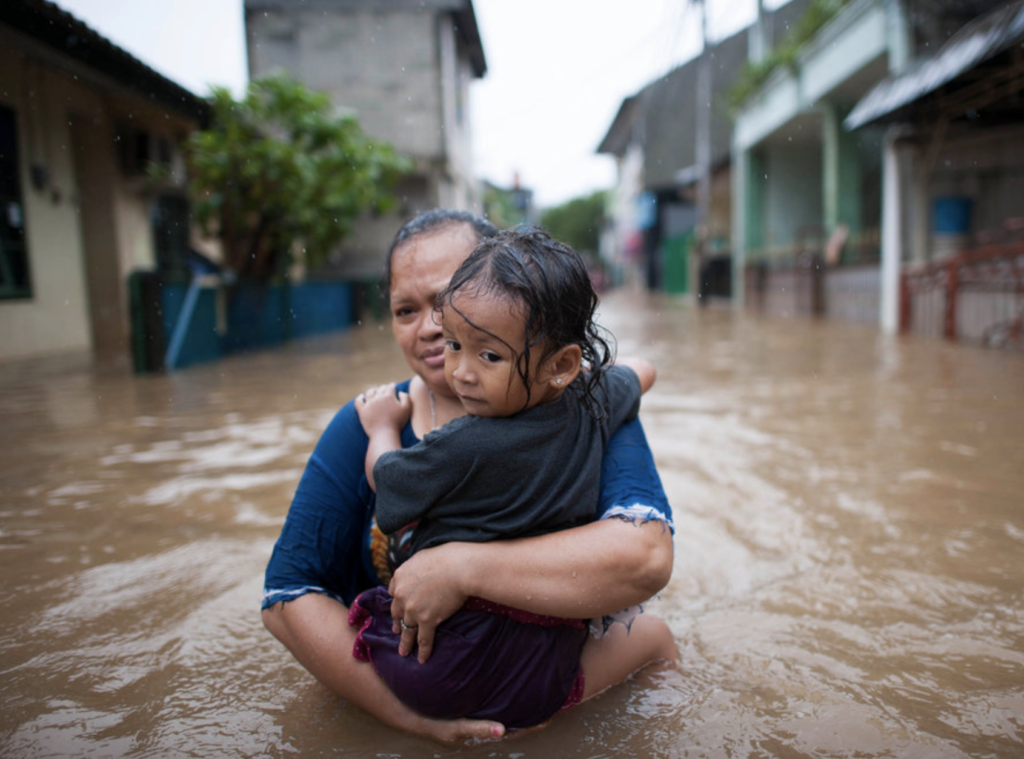South Hobart Primary 6A

Our Questions
Under the most extreme climate change scenarios sea levels could rise by as much as 4-6 m by 2100. When sea level rises by, let say 5 m, that means anything less than 5 m above sea level at the moment will be underwater. The first place to become completely submerged will be the country with the lowest maximum elevation above sea level. That happens to be the Maldives, which has maximum elevation of only 1.8 m! That could be submerged by even low to intermediate climate scenarios.
Luckily for Tasmania, it has lots of mountains, meaning most of the state well above sea level. The high point in Tasmania (mt. Ossa) is 1,617 m above sea level. Even the most extreme sea level rise projection don’t come close to reaching that, so there is a near 0% chance Tasmania becomes completely submerged. Although towns, homes, and ecosystems on the coast, near the beach, could definitely run into trouble!
The surface of the earth has warmed by about 1 degree over the last 100 years. We know this because humans have been making measurements of land and ocean temperatures for several hundred years. By carefully combining these measurements and using mathematical methods to fill in gaps, scientists have been able to track how earth’s temperature has changed since about 1850. To be more precise and consistent, climate scientists have agreed to standardise how they talk about warming. So rather than look at 100 years ago, they use the average temperature between 1850 – 1900 as the background starting point. At the other end, the latest reporting compares this starting point to the average temperature from 2011 – 2020. Between those two time periods (which is slightly more than 100 years), our best estimate is that the earth’s surface has warmed by 1.09 degrees. The earth’s surface is made up of land and sea, and if we break it down, we see that the land surface has warmed more than the sea surface- the land has warmed by 1.59 degrees, while the ocean surface has warmed by 0.88 degrees.
We know the most about how Earth’s surface temperature has changed, because that’s where we have the most measurements from. However, other parts of the earth are also warming. In the atmosphere, temperatures have increased throughout the lower part of the atmosphere, known as the troposphere (roughly from the surface to 15 km above). The ocean has warmed down to at least 2km below the surface, although the strongest warming is at the ocean surface.
What this all means for us is a great question. First, global surface temperatures might not mean that much to us, as we only live in one place. The data for Tasmania, compiled by the Bureau of Meteorology (you can have a look at graphs here) show that Tasmania has followed the global trend pretty closely, and has warmed by about 1 degree over the last 100 years. 1 degree of warming doesn’t sound like very much- after all, a high of 18 is not that different from a high of 17. Certainly in Tasmania this temperature rise hasn’t pushed us to the edge of what the human body can endure. But a rise in temperature is associated with other changes, to things like bushfires, droughts, floods and the movements of plants, animals and even diseases. These have all changed over the past 100 years and we’re still studying how much, how this has affected us and to what extent the changes can be attributed to climate change.
Another thing this means for us is how our ability to explain the temperature change that has occurred gives us confidence that as scientists we have quite a good understanding of how climate works. The graph below shows that the observed warming (black line) is reproduced quite well by climate models, but only if the models include human (red and blue) and natural (green) causes- the natural causes alone can’t reproduce the temperature rise that’s occurred over the last 100 years. This means we can trust the predictions made by the climate models, and this trust should give us confidence to take action to prevent the worst outcomes.
So, there are a few pieces to this:
- First an important premise: Only ice that currently sits on land would contribute to increasing sea levels. Sea ice, which forms by freezing of sea water at high latitudes, does not change sea level. So to answer your question we must look at land ice alone.
- What counts as land ice, and how much sea level does it correspond to? Land ice is found in (i) the grounded parts of the two major ice sheets on Earth, Greenland and Antarctica, (ii) a few smaller ice caps (like Svalbard), and (iii) mountain glaciers. If the Greenland Ice Sheet melted, scientists estimate that sea level would rise about 6 meters. If the Antarctic Ice Sheet melted, sea level would rise by about 60 meters. If all the mountain glaciers on Earth melted, sea level would rise by about 40 cm. In total, this adds up to approx 66.4 m.
- How much land would be left if all this land ice melted? Well, all the land that is approx. 65 m above sea level nowadays. You can go check on Google Earth or similar what that means for the place where you live. Can you find out what would be above this level? When you do this, just bear in mind that even if all this ice were to melt (which we do not know it will), certainly it would not happen in our lifetime, and most likely for several centuries. What’s important to realize though is that the impact this could have is huge for all people living on Earth, so we should do all we possibly can to avoid making climate warmer and our land ice melt.
There have been quite a few questions asking which countries and which places in the world are most affected by climate change, and about which countries are getting hotter, quicker.
As you know, the effects of climate change are different everywhere. Overall, we are seeing the planet heating, but this has different impacts in different places.
Did you know that climate change is also affecting where rain falls? How windy it is? When and where cyclones occur? There is nowhere on Earth that climate change isn’t having an impact, but the ways that climate change affects different countries depends on lots of different factors, including their geographical location, their exposure to different types of change, the sensitivity of the environment to change, and the capacity of their human population to adapt.
Understanding which is the most affected country depends on the risk criteria you are looking at.
If you wanted to know where the highest number of people are affected by climate change right now, you might think of countries affected by more intense extreme weather events, like Pakistan, Haiti, and the Philippines.
Also greatly impacted are countries with large cities in south-east Asia like Indonesia, and Bangladesh, which are losing coastal land with sea level rise, or countries in Africa affected by drought, like Kenya. If you wanted to know which countries are being faced with becoming unliveable or being lost altogether, you might think of countries in the Middle East reaching 50°C more often, or low-lying islands like Tuvalu, the Torres Strait Islands, and the Maldives.

In Bangladesh, salt water flooding over land has made farming impossible in many areas and finding fresh drinking water challenging.
In other parts of the world, the effects of climate change will be most felt by millions of people in terms of access to water. Many countries rely on water from glacier and snow melt both for drinking water and for agriculture. Countries like the Andean nations especially Peru, Chile, Bolivia, and countries in Southeast Asia that rely on glacier meltwater from the Himalayas could be strongly affected, as glacier ice is now melting faster than ever and less snow is tending to fall in some places – meaning there will be less water available in the long term.
Of course, parts of the planet that are already hot will become much more difficult to live in as it becomes hotter. Tropical areas around the Equator are most at risk here. Tropical areas could be pushed towards the limits of what humans can survive if temperatures rise more than 1.5°C above preindustrial levels. Humans can tolerate dry heat better than they can humid heat. Humans are unable to tolerate what is called a “wet bulb temperature” (that’s a measure of heat and humidity together) of over 35°C for very long. In these conditions, the human body is not able to cool itself down by sweating and such conditions can be fatal. Such conditions may have dire consequences for many animals as well. With temperatures increasing everywhere, this could have very serious consequences as about 40% of the world’s population currently lives in tropical areas. This effect of climate change alone could cause a huge refugee crisis with potentially millions of people displaced by climate change by 2050.
Just in terms of temperature rise, perhaps surprisingly, some of the coldest areas have warmed the most due to climate change. Though the global average temperature rise is currently at 1.1°C above preindustrial levels (and Australia’s average temperate is currently 1.44°C higher than when records began) the Arctic is heating up much more dramatically. Between 1971 and 2019, the Arctic’s average annual temperature rose by 3.1°C, meaning it’s heating almost three times faster than the rest of the planet – with drastic consequences on Arctic ecosystems and Indigenous peoples who call the Arctic home. The following video can help us to visualise which parts of the world have heated up most over the past 140 years, and therefore helps us understand which areas are currently most affected by climate change
While some countries might be worse off than others, and some countries might have more capacity to do something to limit the impacts, climate change is affecting ALL OF US and we all have a responsibility to make a positive difference.













